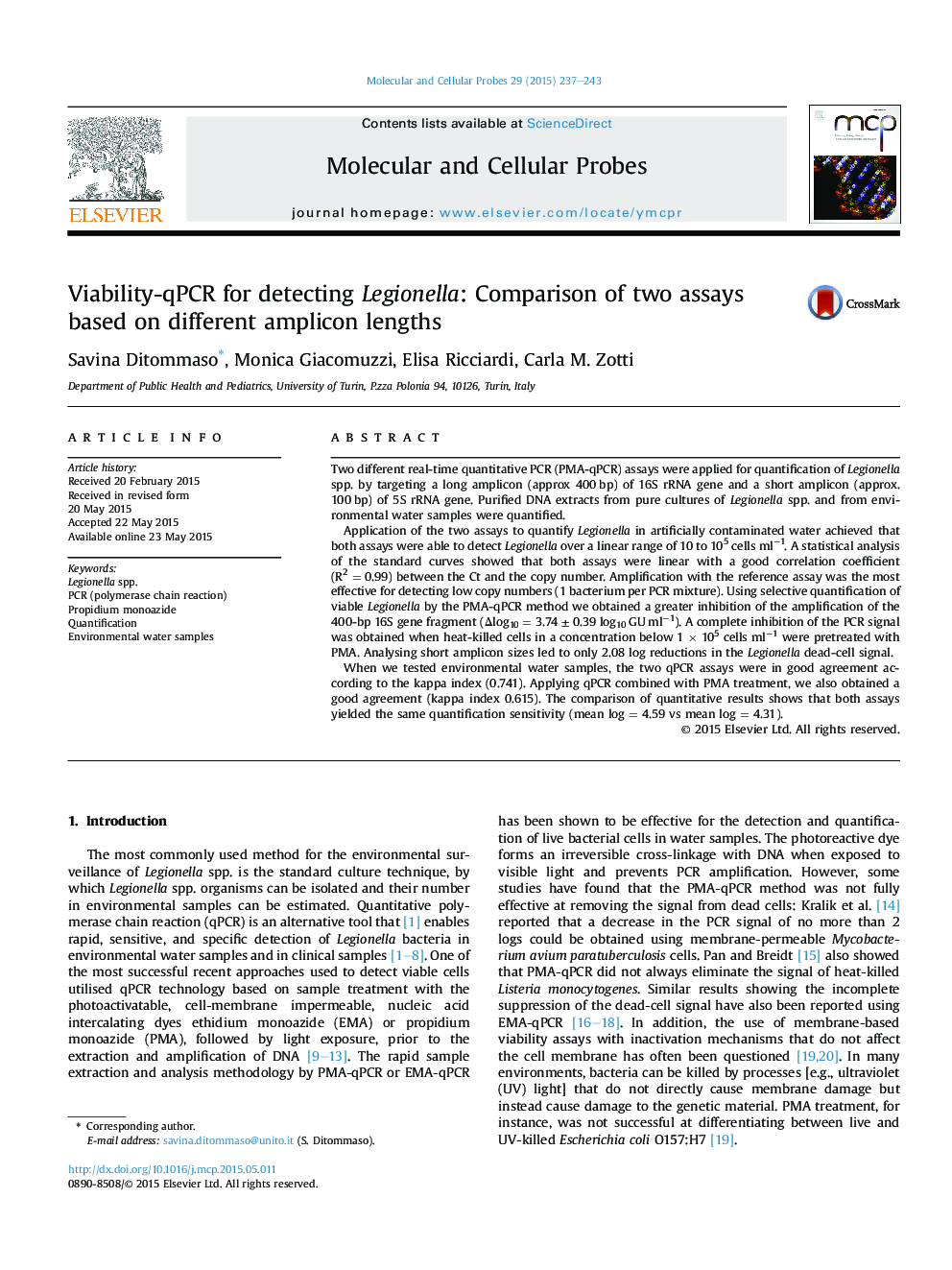| کد مقاله | کد نشریه | سال انتشار | مقاله انگلیسی | نسخه تمام متن |
|---|---|---|---|---|
| 2199579 | 1099599 | 2015 | 7 صفحه PDF | دانلود رایگان |

• We use two qPCR-PMA Legionella assays based on different amplicon length.
• We combined qPCR with PMA treatment to quantify heat killed Legionella cells.
• We use two qPCR-PMA assays to quantify viable Legionella in environmental samples.
• Biotechnology companies should develop assays to screen viable bacteria.
Two different real-time quantitative PCR (PMA-qPCR) assays were applied for quantification of Legionella spp. by targeting a long amplicon (approx 400 bp) of 16S rRNA gene and a short amplicon (approx. 100 bp) of 5S rRNA gene. Purified DNA extracts from pure cultures of Legionella spp. and from environmental water samples were quantified.Application of the two assays to quantify Legionella in artificially contaminated water achieved that both assays were able to detect Legionella over a linear range of 10 to 105 cells ml−1. A statistical analysis of the standard curves showed that both assays were linear with a good correlation coefficient (R2 = 0.99) between the Ct and the copy number. Amplification with the reference assay was the most effective for detecting low copy numbers (1 bacterium per PCR mixture). Using selective quantification of viable Legionella by the PMA-qPCR method we obtained a greater inhibition of the amplification of the 400-bp 16S gene fragment (Δlog10 = 3.74 ± 0.39 log10 GU ml−1). A complete inhibition of the PCR signal was obtained when heat-killed cells in a concentration below 1 × 105 cells ml−1 were pretreated with PMA. Analysing short amplicon sizes led to only 2.08 log reductions in the Legionella dead-cell signal.When we tested environmental water samples, the two qPCR assays were in good agreement according to the kappa index (0.741). Applying qPCR combined with PMA treatment, we also obtained a good agreement (kappa index 0.615). The comparison of quantitative results shows that both assays yielded the same quantification sensitivity (mean log = 4.59 vs mean log = 4.31).
Journal: Molecular and Cellular Probes - Volume 29, Issue 4, August 2015, Pages 237–243